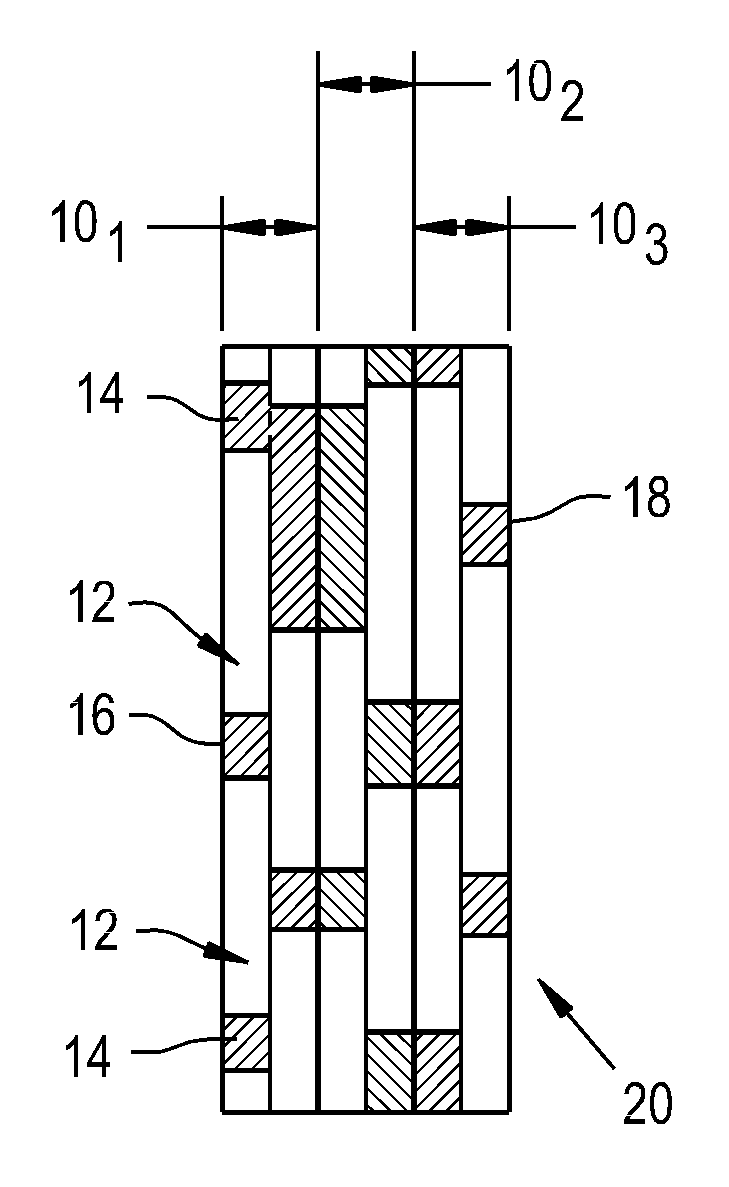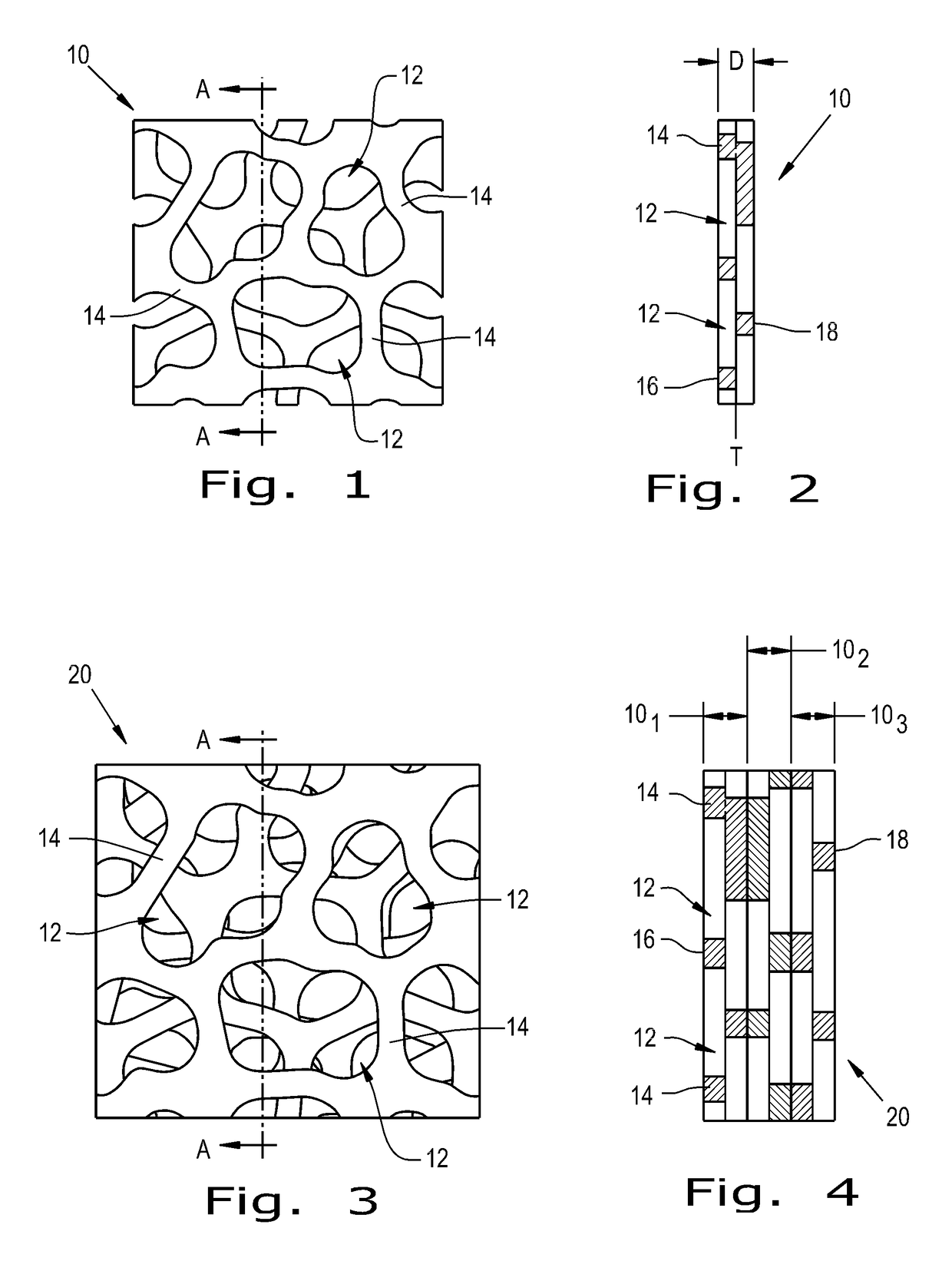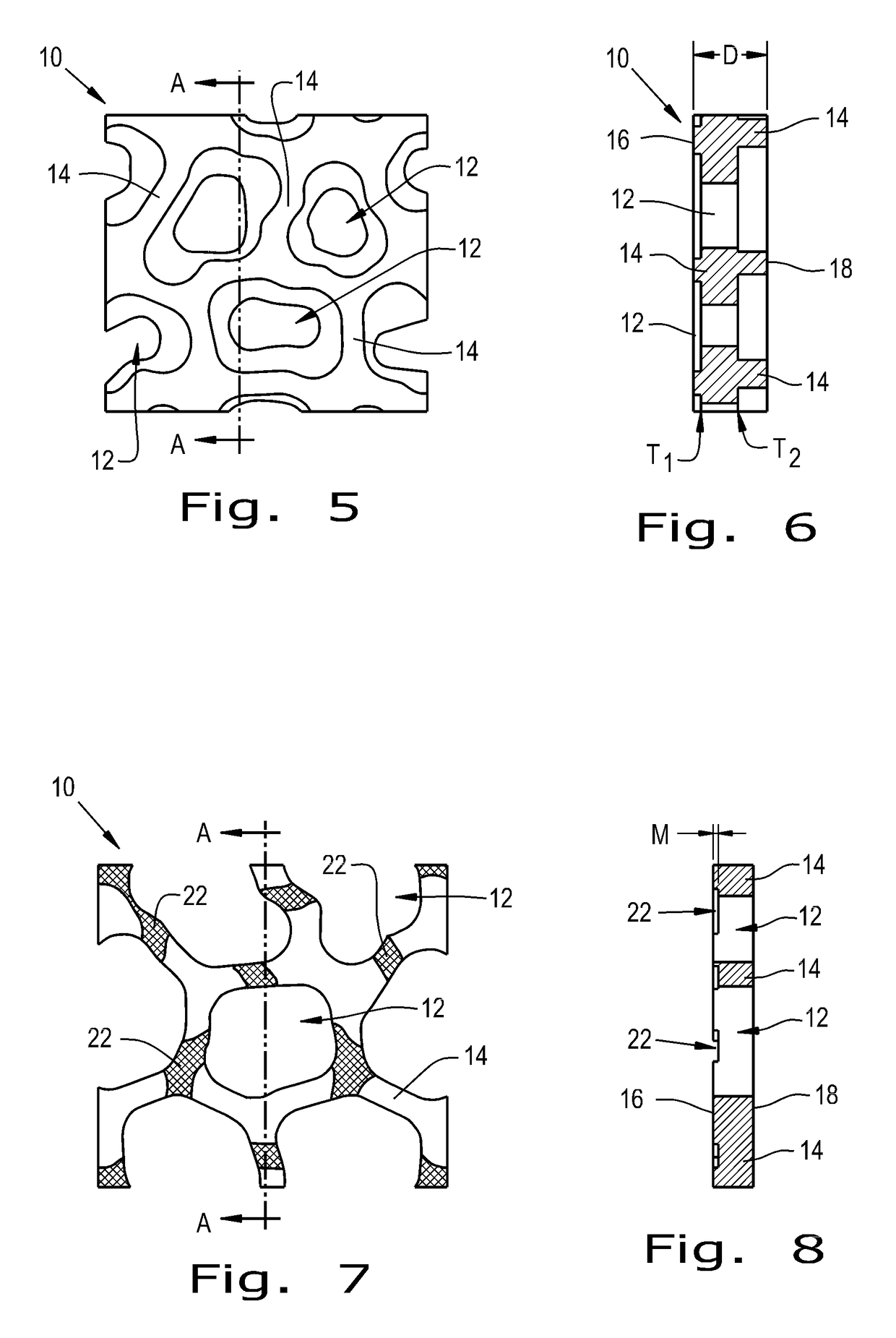Porous tissue ingrowth structure
a technology of porous tissue and ingrowth structure, which is applied in the field of medical implants, can solve the problems of reducing the strength of the scaffold known in the art, reducing the cost of manufacturing of the implant formed from the laminate of thin metal layers, and reducing the thickness of the minimum strut. , to achieve the effect of reducing the minimum strut thickness, reducing the cost of manufacturing, and increasing the strength of the produced three-dimensional scaffold
- Summary
- Abstract
- Description
- Claims
- Application Information
AI Technical Summary
Benefits of technology
Problems solved by technology
Method used
Image
Examples
Embodiment Construction
[0031]Referring now to the drawings, and more particularly to FIGS. 1 and 2, there is shown a single layer 10 of a three-dimensional scaffold for a medical implant according to the present invention. Single layer 10 includes a plurality of pores or through-holes 12 defined by a plurality of struts 14. The geometries of the pores 12 vary through a thickness D of each layer 10. Any layer thickness D can be used, for example layer thickness D may be in a range of, for example, between approximately 0.0001 inch (in) and 10 in, for example 0.0001 to 0.040 in, or 0.020 to 0.040 in. Further, struts 14 are defined as bars of material extending between and defining pores 12. Each layer 10 has a first pore pattern at a top surface 16 and different, second pore pattern at an opposing, bottom surface 18. Transition from the first pore pattern to the second pore pattern takes place at a location or transition point T, where T is defined by the equation T=A*D, with T being a defined distance from...
PUM
 Login to View More
Login to View More Abstract
Description
Claims
Application Information
 Login to View More
Login to View More - R&D
- Intellectual Property
- Life Sciences
- Materials
- Tech Scout
- Unparalleled Data Quality
- Higher Quality Content
- 60% Fewer Hallucinations
Browse by: Latest US Patents, China's latest patents, Technical Efficacy Thesaurus, Application Domain, Technology Topic, Popular Technical Reports.
© 2025 PatSnap. All rights reserved.Legal|Privacy policy|Modern Slavery Act Transparency Statement|Sitemap|About US| Contact US: help@patsnap.com



